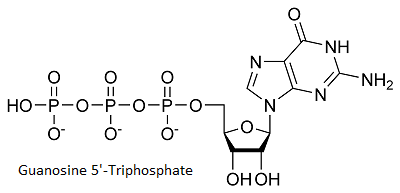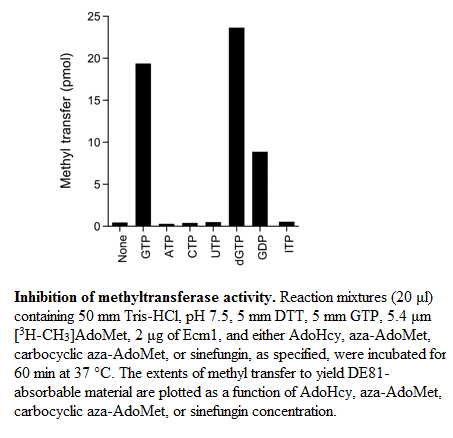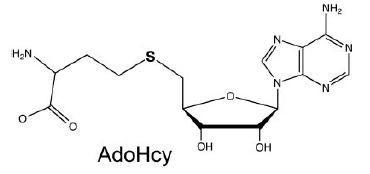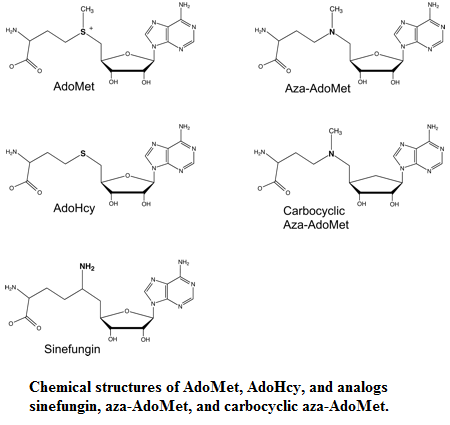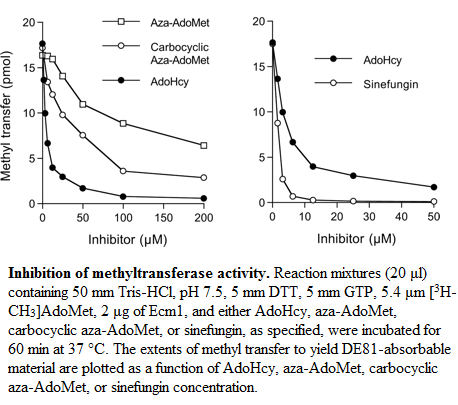Sandbox Reserved 962
From Proteopedia
| This Sandbox is Reserved from 15/11/2014, through 15/05/2015 for use in the course "Biomolecule" taught by Bruno Kieffer at the Strasbourg University. This reservation includes Sandbox Reserved 951 through Sandbox Reserved 975. |
To get started:
More help: Help:Editing |
mRNA Cap (Guanine-N7) Methyltransferase (Ecm1)
The mRNA Cap (Guanine-N7) Methyltransferase is involved in the capping of mRNA. This enzyme catalyses the methyl transfer reaction on the G(5')pppR cap at the C-terminal domain of a mRNA. Ecm1 was isolated of Encephalitozoon cuniculi. This organism belongs to the phylum Microsporidia, in the kingdom of Fungi. E. cuniculi is an obligate intracellular parasite which is able to infect many mammals. An other particularity of this organism is that it had one of the smallest eukaryotic genome. Ecm1 is also the smallest cap methyltranferase identified.
|
Contents |
Biological role
In eukaryotic cells, the synthezise of mRNA is followed by a process of maturation. The best-known modifications are the polyadenylation, the splicing and the capping. The cap is important to the traduction initiation ; it allows the mRNA to be recognized by initiation factors. It is also necessary to keep the stability of the mRNA. The capping is therefore an important step of the maturation. It consists in adding a 7-methylguanosine on the first nucleotide of the mRNA with a diphosphate bonding. The capping involved many steps: First the γ-phosphate from the 5′ end of the nascent RNA is removed. Then a GMP is transfered from GTP to the 5′-diphosphate creating the guanosine 5′-5′-triphosphate. After that, a methyl group is transfered from S-adenosylmethionine to the N7 position of the guanine and an other is transfered to 2′ oxygen of riboses at the 5′ end of the mRNA.
Ecm1 catalyses the transfer of the methyl group from S-adenosylmethionine to the N7 position of the guanine. This enzyme is a key enzyme in this capping process.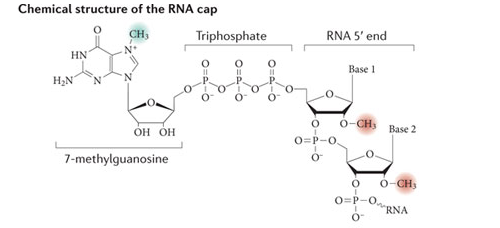
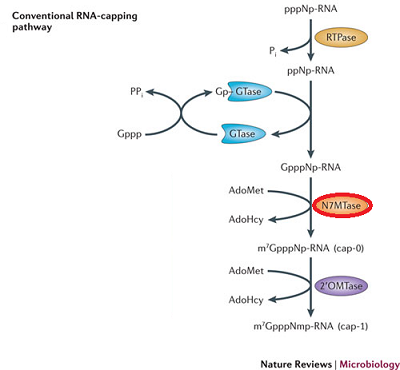
Structure
This protein measures 292 aminoacids in lenght.
The structure of ECM1 is similar to the structure of the whole family of cap methyltransferase. We can indentify structural repeatings characteristic of the family : amongst others alpha helices or beta-sheets can be found.
The structure of the protein could be divided in two segments :
• The from the aminoacids 41 to 62 and from 165 to 292 : carrys the . The helices G, H and I are the from the aminoacid 249 to 284. This segment carrys also the .
• The from the aminoacids 63 to 164 : carrys the and the . [1]
Interaction
Cap Analog Binding (Guanosine 5'-Triphosphate)
binds to the enzyme in a pocket near AdoHcy. (Tyr 145, Leu216, Leu217, Asp218, Ser219, Tyr284) are involded in the binding of the cap analog, more precisely they interact with guanine and with the The cap makes Van der Walls contacts with side chains fromGTP makes a hydrogen bond with and a water mediated bond with . [1]
As we can see on the figure above[2] , the enzyme specifically binds to guanine. This specificity is achieved through different recognitions. The N-1 atom of adenine is unprotonated, this prevent the interaction of adenine with Ecm1. Ecm1 contact the of guanine and permit an additional discrimination between guanine and adenine. Moreover the fact that ITP is not a substrate for Ecm1 shows that the interactions between Ecm1 and are important for substrate binding.We also remark that the methyltransferase is not able to discrminate between and desoxyribose nucleoside sugars.
AdoHcy Binding (S-Adenosyl-L-Homocysteine)
The mRNA Cap Methyltransferase bind to which is the product of the methyl donor AdoMet after the methylation. The interaction describe here are applicable to AdoMet too. AdoHcys is in a pocket formed by amino acids of segment 2.(Lys54, Gly72, Asp78, Asp94, Ile95, Asp122, Ser124, Gln140, Phe141, Ser142) are involved in the stabilisation of AdoHcys.
The interactions between AdoHcys and the enzyme are made of : - Hydrogen bonds mediated by - Van der Walls interactions mediated by - An electrostatic interaction mediated by- A water mediated contact mediated by [1]
Mechanism
This enzyme catalyse N-methyl transfer from AdoMet (S-adenosylmethionine) to GpppRNA, this reaction produce 7-methyl-GpppRNA and AdoHcy. This reaction is made through a SN2 mechanism. We remark that there is no contact between the enzyme and or the AdoMet methyl carbon.Indeed the enzyme does not stabilize the transition state of the chemical reaction, does not promote the activation of the nucleophile or the expulsion of the leaving group. mRNA Cap Methyltransferase brings the two substrates closer and orientates the substrates to facilitate the methyl transfer. [1]
Inhibition
- AdoHcy
- Sinefugin
- Aza-AdoMet & carbocyclic aza-AdoMet
Aza-AdoMet and carbocyclic aza-AdoMet are analogs of AdoMet too. In these two molecules the sulfur atom is replaced by nitrogen. In the carbocyclic derivate the O4-atom of the ribose is replaced by a methylene group. These two molecules are weak inhibitors of Ecm1. The IC50 value of Aza-AdoMet is 100μm and of carbocyclic aza-AdoMet is 35μm [2]
Related Structure
1ri2 : Ecm1 associated with GTP only 1ri3 : Ecm1 associated with AdoHcy only 1ri4 : Ecm1 associated with AdoMet 1ri5 : Ecm1 only
References
- ↑ 1.0 1.1 1.2 1.3 Fabrega C, Hausmann S, Shen V, Shuman S, Lima CD. Structure and mechanism of mRNA cap (guanine-N7) methyltransferase. Mol Cell. 2004 Jan 16;13(1):77-89. PMID:14731396
- ↑ 2.0 2.1 2.2 2.3 Hausmann S, Zheng S, Fabrega C, Schneller SW, Lima CD, Shuman S. Encephalitozoon cuniculi mRNA cap (guanine N-7) methyltransferase: methyl acceptor specificity, inhibition BY S-adenosylmethionine analogs, and structure-guided mutational analysis. J Biol Chem. 2005 May 27;280(21):20404-12. Epub 2005 Mar 9. PMID:15760890 doi:10.1074/jbc.M501073200
Proteopedia page contributors and editors
Aline Girardet & Laure Hertzog
